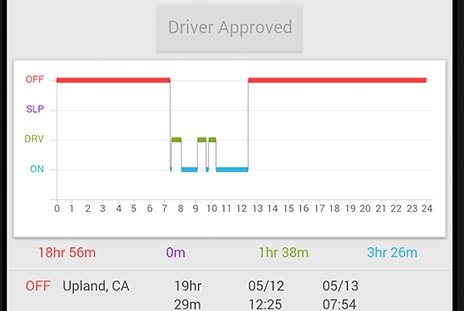Western Transportation Safety Consulting Ltd.
in Lethbridge
On June 05
at 7:13 AM
Trucking regulations surrounding cannabis are still being worked out: Blair. TORONTO, Ont. – Canadians still hoping they’ll be able to legally smoke a joint to celebrate the country’s July 1 birthday will be disappointed, says MP Bill Blair. The former top cop for Toronto turned federal member of parliament was in Toronto Thursday night to talk cannabis legalization. Co-hosting a town hall with MP Arif Virani, Blair addressed concerns from residents about the upcoming changes to drug laws, including those about impaired driving and use by those in safety sensitive positions. Blair says while laws surrounding drivers generally have been hashed out in the bill currently before the senate but adding extra restrictions for commercial vehicle drivers isn’t something that’s being considered right now. Once the law passes all drivers will be considered impaired if there are two nanograms (ng) of cannabis in their system per 100 milliliters of blood – what’s referred to as a 0.02 per se limit, similar to those that restrict alcohol limits to 0.05 or 0.08. More than $161 million will be going into testing equipment and training for officers doing roadside checks. That money will come from the taxes being imposed on cannabis products sold, Blair said. Those roadside tests will be conducted using an oral fluid test – a stick that measures the presence of cannabis in saliva. Currently those tests are only sensitive enough to read a per se limit of 0.05 or higher. Blair says officers will be using every tool at their disposal to detect impaired drivers, and that smell, slurred speech, weaving in traffic, red eyes, or other behaviors that could suggest a driver is high will still be reasonable grounds to take action, even if their levels are too low to be detected by oral fluid tests. Drivers will be ordered to take a blood test if there is reasonable suspicion to believe they’re impaired – potentially even with a failure of an oral fluid test. For truck drivers, there could also be an immediate license suspension. “Ontario has built into the legislation that if it’s detectable, at whatever amount in the blood, you can suspend right away for commercial and graduated licenses.” While there are no specifics for commercial drivers in the legislation, Blair says he agrees with calls from the Canadian Trucking Alliance and others for there to be a zero-tolerance policy on pot use and driving. “I want everybody on the road to be completely sober and safe,” he said. “The message is not that there’s a safe level of cannabis to use to drive, the message is if you’re using cannabis, don’t drive.” Even though there is no immediate regulation specific to the trucking industry, doesn’t mean there won’t be in the future. Blair – who is the parliamentary secretary to the ministers of heath and justice and is helping to craft the new regulations – said additions to the legislation are slated to roll out slowly as more is learned. “This is a process not an event… we’ll do this right.” Meanwhile, the date for initial legalization is still a moving target. Blair said provinces have been asking for an eight to 12-week lead time once the bill receives royal assent to make sure they’re prepared, and they’re going to get it. While both bills on regulation and enforcement are before the senate now, with an expected vote on June 7, if they are sent back to committee with amendments it could be weeks or even months before a final version is passed. Royal assent will be scheduled after the bills make their way through the upper chamber a final time. If there are no changes, the earliest legal cannabis stores can open their doors will be around August 9. Read the full article from Today’s Trucking by Elizabeth Bate at: https://www.todaystrucking.com/trucking-regulations-surrounding-cannabis-are-still-being-worked-out-blair/

Western Transportation Safety Consulting Ltd.
in Lethbridge
On May 28
at 10:19 AM
Lessons to Learn: Western provinces review driver training standards. TORONTO, Ont. — Sukmander Singh, the owner of Adesh Deol Trucking, revealed little about his driver involved in the Tisdale, Sask. truck-and-bus collision that killed 16. The man he knew through common friends had been licensed for a year. The month working for Singh’s two-truck operation reportedly included about 15 days of additional training. The cause of the April 6 crash that killed so many members of the Humboldt Broncos has yet to be determined. No charges have been laid, although Adesh Deol’s second truck was taken off the road pending an investigation. But the collision – and the driver’s relatively limited experience – has spurred discussions about driver training standards in Canada’s prairie provinces and beyond. The scramble by regulators looking to take some sort of action became evident April 27, when Saskatchewan Government Insurance (SGI) hastily reversed a memo that just days earlier had promised to mandate entry-level driver training. Ontario is currently the only province to require that. “No decision has been made regarding Class 1 training,” wrote Kwei Quaye, vice-president, traffic safety, driver and support services, in the second memo. “To be clear, mandatory Class 1 training is an option that has not been ruled out. Along with the government of Saskatchewan, we continue to work with the industry and other stakeholders to determine the exact content of the new curriculum, including the number of hours of training.” In the original memo to the province’s driving instructors, SGI’s auto funds division had clearly announced plans to require a minimum of 70 hours of training before securing a licence. A plan to be in place no later than 2019 was to be implemented “shortly thereafter”. “As you know, a lot has been in the media following the Humboldt tragedy and there is a spotlight on Class 1 testing and Class 1 driver training and that’s OK,” SGI said at the time. “Mandatory means just that: a driver will no longer be able to challenge the road test to become a Class 1 driver unless they have completed the mandatory training at a recognized school first.” “The training will produce qualified and skilled drivers and it will eliminate inconsistencies between how people are getting their training and the content of that training,” the original memo added. The reversal surprised industry representatives including Susan Ewart, executive director of the Saskatchewan Trucking Association. But it wasn’t the first time they had heard a 70-hour limit proposed. The timeline had already been included in a government bid to update voluntary driver training curricula, Ewart said, referring to discussions that began last July. If anything, the proposed limit was seen by the industry group as falling short of what is actually needed. By way of comparison, Ontario’s mandatory regime requires 103.5 hours of training, although schools in that province have an option to credit trainees with “advanced standing” for experience linked to a lower licence class. The SGI’s proposed training standard included 18 hours in a classroom, but the Saskatchewan Trucking Association suggested 37.5 hours would be more effective, Ewert offered as an example. “Even if [students] do take driver training from a driver training school, they’re still not coming out with an understanding of how to be a professional truck driver,” she said, referring to knowledge needed around topics such as weights and dimensions and hours of service. But the 70 hours was still seen as a step in the right direction, and was expected to be defined this year for a rollout in 2019. As for the on-again-off-again discussion of mandating those hours? “We’d been receiving a lot of questions and inquiries from driver instructors and driving schools regarding the discussion that’s been happening in the media,” explained Tyler McMurchy, manager of media relations for Saskatchewan Government Insurance, referring to how the original memo came about. But the internal bulletin to driver development areas “was not clearly written,” he added, suggesting it was “interpreted in a way that anybody could have.” “There is going to be something stronger put in place, but exactly what that will look like has not been determined,” he said. “Mandatory training has not been ruled out, but it’s just that the decisions haven’t been made yet. We do intend to have something different in place in early 2019.” “Even the number of hours has not been determined yet,” McMurchy said. “Seventy [hours] is something we had been looking at. It may have been something different.” “The work SGI was already doing suggested that the training will consist of classroom hours, hard hours [where a driver is learning about the rig and how to inspect it], and then behind-the-wheel hours with practical hands-on driving,” Quaye writes about SGI’s current position. “The written, pre-trip, and road tests would be updated to reflect the enhanced curriculum once it’s developed.” Manitoba and Alberta, meanwhile, continued on paths of their own. Alberta Transport Minister Brian Mason said during a meeting of the Alberta Motor Transport Association that training is now on the “front burner” for his government. Manitoba is also consulting on a plan to standardize training and certification for commercial drivers – meeting National Occupational Standards. “This is something the trucking industry has asked for and we want to work together in a collaborative way to see how this would work in Manitoba,” said Manitoba Infrastructure Minister Ron Schuler. “It is clear that Manitoba needs to start this work to ensure that all provinces are moving together on a standardized system,” he said. “There’s work to be done, but I think it’s work headed in a positive direction,” said Terry Shaw, executive director of the Manitoba Trucking Association. “What we didn’t get from our minister is any commitment to what a standard is.” Manitoba currently has a 244-hour voluntary training standard, but it’s followed by just four of the 18 private vocational institutes registered for driver training, Shaw said. Those four schools have curricula that aligns with National Occupational Standards established by Trucking HR Canada, defining the knowledge, skills, and abilities needed to be a truck driver for equipment with gross vehicle weights up to 100,000 pounds. Operating a B-train, such as the vehicle involved in the Humboldt crash, is identified as a specialty. “Making it mandatory is just, quite frankly, as simple as the minister saying, ‘Thou shalt,’” Shaw said. And his group is promoting the idea of mandatory entry-level training to meet the national standard. “We’re quite pleased with where everything is going,” said Angela Splinter, executive director of Trucking HR Canada, noting how her group is supporting provincial trucking associations in the such efforts. While it doesn’t define a specific number of training hours, the National Occupational Standard informs the end goal that trainees are expected to reach. It also was the foundation of Ontario’s training requirements. “The Canadian Trucking Alliance (CTA) would like to commend the provinces of Alberta, Saskatchewan, and Manitoba for their recent acknowledgement of the importance of introducing mandatory entry level training for our sector,” said Scott Smith, chairman. “As an industry, we have confidence our government partners in all provinces currently without mandatory entry level training will continue to work with CTA member provincial trucking associations to introduce similar requirements that raises the bar as it relates to commercial truck driver training.” Read the full article by John G. Smith from Today’s Trucking at: https://www.todaystrucking.com/lessons-learn-western-provinces-reviewing-driver-training-standards/

Western Transportation Safety Consulting Ltd.
in Lethbridge
On May 22
at 3:21 PM
Roadcheck inspection spree looms, to focus on hours compliance. The Commercial Vehicle Safety Alliance‘s annual International Roadcheck, a three-day ramp up of truck and bus enforcement across North America, is scheduled for June 5-7. The year’s focus will be on hours-of-service compliance, says CVSA, due in part to the implementation of the U.S. DOT’s electronic logging device mandate. “The top reason drivers were placed out of service during 2017 International Roadcheck was for hours-of-service violations,” said CVSA President Capt. Christopher Turner of the Kansas Highway Patrol. “Although the electronic logging device rule that went into effect on Dec. 18 does not change any of the underlying hours-of-service rules or exceptions, the ELD mandate placed a spotlight on hours-of-service compliance. We thought this year would be a perfect opportunity to focus on the importance of the hours-of-service regulations.” However, inspectors will perform full Level I inspections on most rigs checked during the inspection blitz. Level I inspections are the most thorough, including examination of both driver compliance and vehicle-related violations. CVSA has said in years past that an average of 15 trucks and buses are inspected every minute across North America during the 72-hour event. In last year’s Roadcheck, 15,000 out-of-service orders were issued. Of those, 12,000 were for vehicle-related violations and 3,000 were for driver-related violations. Violations related to hours of service and brakes topped the out-of-service infractions. Enforcers in 2017 conducted more than 63,o00 inspections during the 72-hour event. Read the full article by James Jaillet of Overdrive Online at: https://goo.gl/9ZneDt

Western Transportation Safety Consulting Ltd.
in Lethbridge
On May 18
at 1:11 PM
Drivers ‘deserve to be trained’, says BC widow calling for nation-wide standards. FALKLAND, B.C. – Pattie Babij is on a mission to make new driver training mandatory nation-wide. It’s been a difficult year for Babij. A little more than 12 months ago her husband Steve was driving his truck near Revelstoke, B.C. when another semi crossed the median and hit him head on – neither he nor the couple’s dog Zak survived the crash. To add to the grief, she’s being forced to sell her dairy farm because she’s unable to run it without her husband’s help. The other driver in her husband’s incident was charged with driving a motor vehicle without due care and attention and will appear in court on May 9. Police haven’t said whether the crash was a result of lack of driver training, but the topic was a long-time concern for Steve who complained that he met drivers on the road who didn’t know how to complete tasks like setting up their brakes or putting chains on their tires. After the initial collision Babij says she knew she had to do something to advocate for better training for commercial drivers but finding the strength was difficult. It wasn’t until another tragic crash took the lives of 16 members of the Humboldt Broncos hockey team and injured 13 others, that she took action. “I had to dig deep. Someone has to stand up and has to do something.” The “Safer Public Roadways for Steve and Zak” campaign on Facebook calling for the federal government to regulate the training programs for drivers is gaining followers who want to see a national training standard provinces must adhere to, including designating commercial driving a trade with an apprenticeship program. A petition is being launched with the aim to present it to the House of Commons in late August or early September. As a former employee of WorkSafe BC with a health and safety background Babij wants to ensure the campaign follows proper procedures and meets the requirements of the House of Commons, so she’s working with her local MLA to get the ball rolling, and is reaching out to community organizations to help generate support and input on what a training program might look like. Training and licensing, though, are handled provincially. Currently Ontario is the only province with a mandatory number of training hours to obtain a new Class A/1 driver’s license. Other provinces require licensees to pass written and road tests, but have no minimum requirement for hours logged in-cab or in a classroom. The suggested changes include yearly audits of training schools, a graduated program so drivers can work up to carrying a full load, and adding a mandatory apprenticeship so new drivers get the benefit of working with more senior personnel before hitting the road on their own. Some large fleets have already starting implementing mentorship programs for new hires, as well as refusing to hire drivers without a training program from a recognized school under their belt. “It’s expensive for the employers, but really the good employers are already doing this. It’s not going to affect them. It’s going to affect the ones that aren’t doing it,” said Babij. The petition is also making another ask of any new regulations that are designed. “It’s also going to ask that all drivers are fluent in English.” Babij is advocating for an English-language competency exam for drivers to ensure they can read road signs. In response to at least on Facebook comment calling the ask racist, Babij says she welcomes drivers from other countries, but wants to ensure all drivers are able to read what’s necessary to do their job. “There’s companies sourcing drivers that can’t speak English… interpreters getting people through those courses,” she claimed. So far Babij says the response to her campaign has been overwhelmingly positive, with drivers and family members of those who have been involved in incidents on the road sending messages of support. “I’ve had tons of drivers say thank you for standing up. They deserve to be trained adequately.” Welcoming those messages, as well as wider discussion on the topic, Babij says she can be reached through the Facebook page for the group. Requests for the petition can be sent there too. “We can do this. It shouldn’t be costing people their lives. We need to pull together and we can get this problem solved. We don’t need to be wiping out people on the highway.” See the full article by Elizabeth Bate of Today’s Trucking at: https://www.todaystrucking.com/drivers-deserve-trained-says-bc-widow-calling-nation-wide-standards/

Western Transportation Safety Consulting Ltd.
in Lethbridge
On May 15
at 12:38 PM
Road Safety Week focusing on dangerous D’s KANATA, Ont. – Canada Road Safety Week is scheduled to run May 15-21, as the Canadian Association of Chiefs of Police looks to draw attention to an array of safety-related issues. It’s a campaign asking people to take the D’s — in the form of drunk, drugged, distracted, drowsy, dangerously, or detached – out of driving. May 16 will include a special focus on alcohol-impaired driving, while the 17th will focus on fatigue-impaired driving. Distracted driving is the focus on the 18th, followed by drug-impaired driving and aggressive driving on the 19th and 20th, respectively. Occupant restraint use rounds out the issues of the week on May 21. May 19 is also designated as National Enforcement Day. The campaign is designed as part of the broader Canada’s Road Safety Strategy 2025, which looks to make Canada’s roads the safest in the world. According to Canadian Motor Vehicle Traffic Collision Statistics, there were 1,898 motor vehicle fatalities in Canada in 2016, up 2% from 2015. The 10,322 recorded serious injuries were down 4% year over year. The 5.2 fatalities per 100,000 people, and 5.1 fatalities per billion vehicle kilometers traveled, remained unchanged. In 2015, police reported 72,039 impaired driving incidents, representing a rate of 201 incidents per 100,000 people. This is the lowest rate since data on impaired driving was first collected in 1986 (-65%), and 4% lower than 2014. Each year in Canada, about 2,000 people are killed and 165,000 are injured while using the road transportation system, annually costing society $37 billion (2.2% of Canadian GDP). Read the full article from TruckNews.com at: https://www.trucknews.com/transportation/road-safety-week-focusing-dangerous-ds/1003085709/

Page 2 of 20


